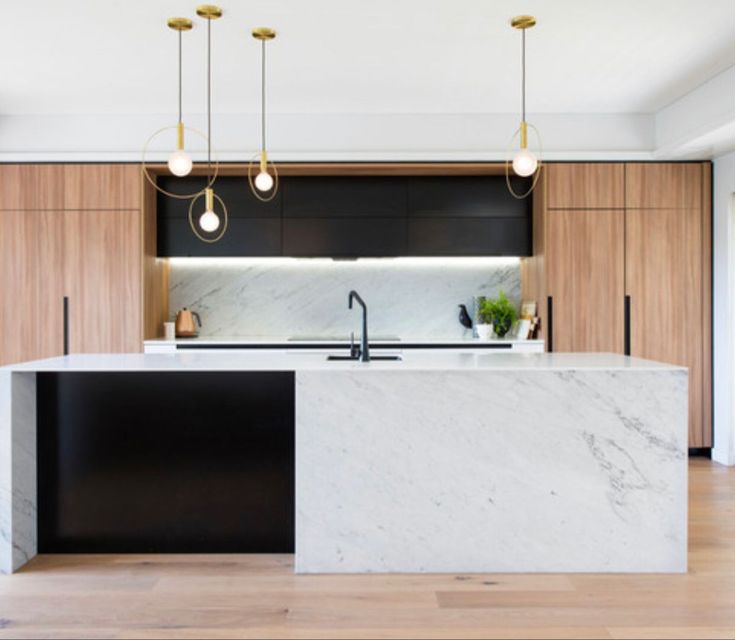
Scandinavian design, a style renowned for its clean lines and functional approach, has captured the hearts of design enthusiasts worldwide. Its appeal lies in its ability to create serene and inviting spaces that prioritize both aesthetics and practicality. Many people struggle to create a home environment that’s both stylish and comfortable, often feeling overwhelmed by complex design choices or the high cost of trendy furniture. This article will delve into the core principles of Scandinavian design, providing you with practical tips and examples to transform your living space. We’ll explore key elements such as the use of natural materials, the importance of light, and the minimalist aesthetic that defines this iconic style, guiding you step-by-step in your design journey.
The Essence of Scandinavian Design: Minimalism and functionality
Understanding the Core Principles
Scandinavian design, originating in the Nordic countries of Denmark, Sweden, Norway, Finland, and Iceland, is more than just a trend; it’s a design philosophy. At its heart lies a commitment to minimalism, functionality, and the use of natural materials. This approach prioritizes clean lines, simple forms, and a focus on creating spaces that are both visually appealing and highly practical. The emphasis is on creating a sense of calm and tranquility, a haven from the often-chaotic pace of modern life. This design style isn’t about sacrificing style for practicality, rather it’s about finding the perfect harmony between the two. It’s about creating a space where functionality enhances the aesthetic appeal, not detracts from it. Think of a beautifully crafted wooden chair, not only comfortable to sit in but also a visually stunning piece that adds character to the room. That’s the magic of Scandinavian design.
The Impact of Natural Light
Natural light plays a crucial function in Scandinavian design. Given the long, dark winters in the Nordic region, maximizing natural light is essential in creating bright and welcoming interiors. Large windows, light-colored walls, and reflective surfaces are commonly used to bounce light around the room. This creates an airy and spacious feeling, even in smaller spaces. This emphasis on natural light is not just about aesthetics; it’s about well-being. Studies show that exposure to natural light can improve mood, productivity, and overall health, making it an integral part of the holistic design approach.
Natural Materials: A Connection to Nature
Scandinavian design prioritizes the use of natural materials like wood, wool, and stone. These materials bring a sense of warmth, texture, and authenticity to the space. The use of wood, for instance, is prevalent in furniture, flooring, and wall paneling. The choice of wood type—from light-colored birch to darker oak—can significantly influence the overall feel of the space. Similarly, the inclusion of wool textiles such as rugs, blankets, and throws adds a layer of comfort and warmth, enhancing the cozy atmosphere often associated with Scandinavian interiors. The integration of these natural elements creates a strong connection to nature, contributing to the overall sense of peace and tranquility.
Key Elements of Scandinavian Design: Light, Space, and Simplicity
The Importance of Light Colors
Light and neutral color palettes are a hallmark of Scandinavian design. Whites, creams, grays, and pastels dominate, creating a sense of spaciousness and airiness. These colors reflect light, making rooms feel brighter and larger than they actually are. Darker colors are used sparingly, often as accents to add visual interest and depth. The color palette is crucial in creating a sense of calm and serenity, contributing to the overall minimalist aesthetic. The use of light colors also ties in with the emphasis on natural light, helping to further enhance the bright and airy atmosphere.
Embracing Minimalism: Less is More
Scandinavian design is deeply rooted in the philosophy of minimalism. This means avoiding clutter and focusing on essential pieces of high quality. Each item in a Scandinavian-inspired space serves a purpose and contributes to the overall aesthetic. This approach helps create a sense of order and tranquility, allowing you to truly appreciate the beauty of each object. It’s about thoughtful curation, not simply discarding possessions. It’s about choosing pieces that are both functional and beautiful, ensuring that every element enhances the overall design.
functionality and User-Centric Design
functionality is paramount in Scandinavian design. Furniture and other objects are designed with user experience in mind. They are practical, durable, and easy to use. Consider the simple yet elegant design of a classic Scandinavian chair—ergonomic and comfortable, designed to be both visually pleasing and effortlessly functional. This user-centric approach extends beyond furniture to encompass all facets of the design, ensuring that every detail serves a practical purpose, adding to the seamless integration of form and function.
Incorporating Scandinavian Design into Your Home: Practical Tips and Ideas
Choosing the Right Furniture
When incorporating Scandinavian design into your home, focus on selecting high-quality, durable furniture with clean lines and simple forms. Opt for natural materials like wood or sustainable alternatives. Look for pieces that are both visually appealing and practical. A well-designed sofa, for instance, should not only look great but also be comfortable and durable. Avoid ornate details and prioritize functionality over superfluous embellishments. Remember that less is more; select fewer, high-quality pieces rather than a large number of lower-quality items.
The Power of Textiles and Accessories
Textiles and accessories play a vital function in adding warmth, texture, and personality to a Scandinavian-inspired space. Incorporate wool blankets, sheepskin rugs, and linen cushions to add layers of comfort and warmth. select neutral colors that complement the overall palette, but don’t be afraid to incorporate a pop of color through carefully selected accessories. Remember, textiles are a great way to introduce texture and visual interest while staying true to the minimalist spirit of the design.
Lighting: Layering for Ambiance
Lighting is crucial in Scandinavian design. It’s not simply about illuminating a space but creating a warm and inviting atmosphere. Layer varied types of lighting, incorporating natural light through large windows, supplemented by task lighting for specific areas and ambient lighting to create a relaxing mood. Consider using pendant lights, table lamps, and floor lamps to create a multi-layered lighting scheme that enhances the overall ambiance. Dimmable lights allow you to adjust the mood depending on the time of day or occasion.
Beyond the Basics: Exploring Variations in Scandinavian Design
Danish Design: Craftsmanship and Modernity
Danish design, often considered a cornerstone of Scandinavian style, emphasizes exceptional craftsmanship and the integration of modern aesthetics. Think of the clean lines of Hans Wegner’s Wishbone Chair or the elegant simplicity of Arne Jacobsen’s Egg Chair. These designs demonstrate a commitment to quality materials and meticulous attention to detail, creating pieces that are both timeless and incredibly functional. Danish design often incorporates a touch of warmth and organic forms, distinguishing itself from some of the more minimalist interpretations of Scandinavian style.
Swedish Design: Minimalism and functionality
Swedish design often embodies a purist approach to minimalism, with a strong emphasis on functionality and practicality. The focus is on creating clean, uncluttered spaces that are both visually appealing and highly practical. Swedish design often incorporates a muted color palette, featuring natural materials and streamlined forms. It frequently showcases a commitment to sustainable practices, reflecting a conscious effort to minimize environmental impact. This reflects a focus on simple, elegant solutions, prioritizing utility and longevity.
Exploring the idea of Hygge
Hygge, a Danish idea often associated with Scandinavian design, focuses on creating a warm, cozy, and inviting atmosphere. It’s about creating a sense of comfort and well-being through simple pleasures such as soft lighting, comfortable textiles, and the enjoyment of simple moments. While not strictly a design element, hygge is a key facet of the lifestyle associated with Scandinavian interiors, creating an atmosphere of textment and relaxation.
The Enduring Appeal of Scandinavian Design: A Timeless Aesthetic
Adaptability and Modern Relevance
Scandinavian design has endured for decades, proving its versatility and adaptability across varied settings and periods. Its core principles of simplicity, functionality, and natural materials remain timeless, making it effortlessly pertinent in contemporary homes. Its clean lines and understated elegance integrate seamlessly into modern interiors, adapting to various styles and tastes. Its adaptability ensures its sustained popularity, consistently evolving to meet contemporary preferences while retaining its core identity.
Sustainability and Ethical Considerations
The emphasis on natural materials and durable, long-lasting furniture makes Scandinavian design inherently sustainable. The focus on quality over quantity encourages mindful consumption and reduces the need for frequent replacements. Moreover, the use of sustainable wood and other ethically sourced materials is becoming increasingly prevalent, reflecting a growing awareness of environmental responsibility. These eco-conscious practices make Scandinavian design a responsible and ethical choice for the modern home.
Global Influence and Modern Interpretations
The influence of Scandinavian design extends beyond its geographical origins, with its minimalist ethos and functionality widely emulated and adapted around the world. This global appeal reflects a universal desire for clean, functional, and aesthetically pleasing spaces. Modern interpretations of Scandinavian design often incorporate contemporary elements and materials while upholding its core principles. This ongoing evolution showcases the design’s enduring relevance and enduring appeal.
In essence, Scandinavian design’s allure lies in its masterful blend of simplicity and functionality. By prioritizing clean lines, natural materials, and user-centric design, it creates spaces that are both aesthetically pleasing and highly practical. Embrace the minimalist ethos, incorporate natural light, and select high-quality, durable pieces to bring the charm of Scandinavian design into your own home. Start exploring varied design elements and create a space that reflects your personal style while enjoying the timeless elegance of this popular design philosophy. Learn more and explore further design inspiration by visiting our resources page!
